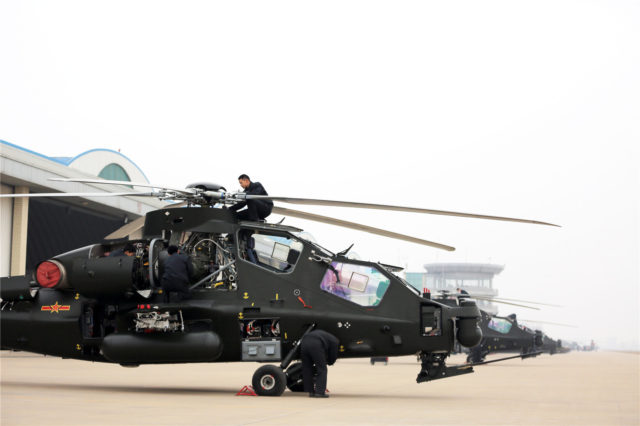 President Trump was typically self-absorbed in his tweet on Wednesday celebrating the 242nd birthday of the United States Army. “Proud to be your commander-in-chief,” he proclaimed to the soldiers.
President Trump was typically self-absorbed in his tweet on Wednesday celebrating the 242nd birthday of the United States Army. “Proud to be your commander-in-chief,” he proclaimed to the soldiers.
Yet, when it comes to the actual life-and-death responsibilities of the commander in chief — overseeing America’s vast war machine and sending men and women into conflict — Mr. Trump seems more like the delegator in chief. The latest evidence was his decision this week to give Defense Secretary Jim Mattis the authority to determine troop levels in Afghanistan, which could lead to an increase of as many as 5,000 troops, if proposals favored by Mr. Mattis and his generals go forward.
Mr. Mattis has acknowledged to Congress that the United States-led coalition is “not winning” in Afghanistan. It is not at all clear that adding 5,000 more troops — a roughly 50 percent increase over the current troop level of 9,800 — can make a difference, especially when the administration has yet to confront the basic problem of ensuring public safety and the larger political and economic issues that must be part of a comprehensive strategy to resolve the conflict.
What such a decision would do is reverse the drawdown President Barack Obama put in place and set a new policy of expanding involvement in a war that has already dragged on for 16 years, cost thousands of American and Afghan lives and consumed billions of dollars.
Having spent five years in Afghanistan (between 2004 and 2014) I am convinced that the fundamental problem is governance failure.1) Local...
stu freeman 42 minutes ago
Pakistan is our "regional partner"? Were it not for that country and its security service the Afghan Taliban would have no refuge to plan...
OSS Architect 46 minutes ago
Where is the diplomatic initiative in Afghanistan? Mr Trump is de-funding the State department, and the generals like Mr Mattis have told...
Military commanders chafed under Mr. Obama’s tight controls on troop deployments and war making, which some of them saw as micromanagement. Even so, commanders in chief cannot subcontract their most sacred duties; what the United States faces at this moment is not some routine tactical maneuver or choice. It is what to do about America’s longest war. That is, at bottom, Mr. Trump’s responsibility, and at the moment the nation has no idea what he thinks or where he is headed.
Mr. Trump, who has no prior government experience, leaves the impression that he is cowed by the weighty responsibility of sending more Americans into battle, and is looking to put that onus on Mr. Mattis so he has somebody to blame if things go wrong, as he did when he fingered the generals for a botched raid in Yemen in January, in which one member of the Navy SEALs was killed.
That the president may be distancing himself from a complex challenge is only one concern. Another is the absence of an informed, wide-ranging public debate. Discussions about possible troop increases have largely been theoretical and limited to experts, prompting Senator John McCain, the Republican chairman of the Senate Armed Services Committee, to complain fiercely at a hearing on Tuesday that the Pentagon has yet to present a plan to regain the battlefield momentum that could provide a framework for decision making.
There is an urgent need for just such a plan and such a discussion, not least because everything in Afghanistan seems to be going backward. Mr. Mattis says that he may send some additional troops even before the new war plan is completed, perhaps next month, because the Taliban is once again “surging.” (The Islamic State, a relative newcomer to the conflict, has been flexing its muscles in Afghanistan this year.)
Apart from the fact that the need for additional troops has not been cogently debated, much less established as necessary, such a move now would be premature: None of the big questions have been answered. How will 5,000 more troops turn the tide, when the United States was unable to bring stability to Afghanistan when it had more than 100,000 troops there in 2011? What is the core American national security interest — defeating Al Qaeda, ISIS, the Taliban? Stabilizing the Afghan state? All of the above? None?
American civilian and military leaders have long agreed that the goal must be a political settlement with the Taliban. Yet five months into Mr. Trump’s tenure, the well-resourced Pentagon, which is on track to receive a large budget increase this year, is calling the shots — not the State Department, which Mr. Trump’s budget would decimate.
One major hindrance to sound policy making is the fact that there are few experts in place to do the work; many senior national security positions remain unfilled. However capable and respected Mr. Mattis may be, the Pentagon and American military forces cannot alone bring stability, or whatever counts as “winning,” to Afghanistan. To achieve any worthwhile outcome, the president must be committed and involved, as must his entire national security team. So far the Pentagon is running the show, largely by default.













